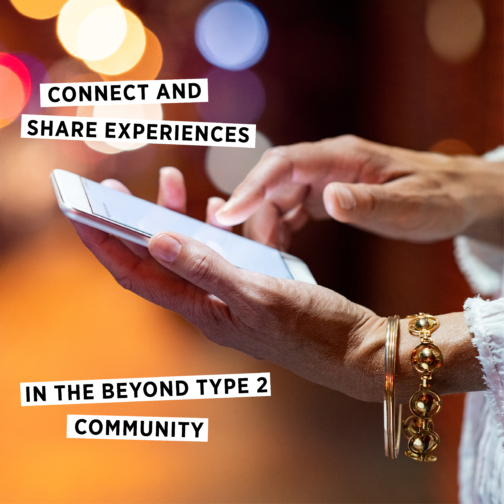Your Guide to CGM Access + Affordability
Getting your insurance to approve a prescription for a continuous glucose monitor (CGM) isn’t easy. CGM technology can be expensive and might come with high out-of-pocket costs whether you have insurance coverage or not!
CGMs are an invaluable tool for people with type 1 and type 2 diabetes. Diabetes research continues to prove that this technology can help people lower their A1Cs, reduce their risk of low blood sugar and live a better quality of life.
In this guide, we share tips for getting access to a CGM and the hurdles you may encounter along the way, whether you have insurance, are uninsured or underinsured.
Getting a CGM through insurance
If you are attempting to get a CGM through your insurance, there are several factors to keep top of mind as you begin this process.
Before you meet your insurance “The amount you pay for covered health care services before your insurance plan starts to pay. With a $2,000 deductible, for example, you pay the first $2,000 of covered services yourself.” (Healthcare.gov)deductible, you could pay a portion of the cost or the entire cost of your CGM supplies. When you hit your deductible, your insurance will typically start to cover more of the bill, if not all of it. At which point, you may have to pay a “A fixed amount ($20, for example) you pay for a covered health care service after you’ve paid your deductible.” (Healthcare.gov) copay until you meet your “The most you have to pay for covered services in a plan year. After you spend this amount on deductibles, copayments, and coinsurance for in-network care and services, your health plan pays 100% of the costs of covered benefits.” (Healthcare.gov)out-of-pocket max for the year.
It is vital to clearly understand what benefits your CGM is covered under your insurance and relay them to your direct medical supplier to prevent higher out-of-pocket costs or surprise bills.
Typically, CGMs are covered under “Durable medical equipment (DME) is a class of medical supplies that covers a wide range of items. DME devices can improve the mobility of people who have trouble getting around after an illness or operation, and the term also covers safety devices that can prevent injuries in the home.” (HelpAdvisor.com)durable medical equipment (DME) benefits with employer-sponsored health insurance, not pharmacy benefits, which usually means only a portion—normally ranging from 25 to 50 percent—will be covered. Your insurance rep will be able to tell you what benefits your CGM is covered under, if at all.
Don’t be intimidated—most DME suppliers know how to do this for you, but putting the information in your hands will only benefit you! The more aware you are, the more you will be able to take full advantage of your health insurance benefits.
Overcoming CGM insurance hurdles + headaches
You may need to prove that a CGM is a medical necessity with your insurance through “Prior authorization—sometimes called precertification or prior approval—is a health plan cost-control process by which physicians and other health care providers must obtain advance approval from a health plan before a specific service is delivered to the patient to qualify for payment coverage.” (ama.assn.org)prior authorization before filling it. Seek help from your doctor if this is the case. They should be able to assist you as many patients need prior approval before getting a CGM covered by insurance.
Here are some tips for tackling common insurance obstacles:
- Call your insurance company to find out what they need from you to get a CGM approved.
- Ask your doctor to submit statements explaining one or several of the following that proves the need for a CGM: hypoglycemia unawareness, planning for pregnancy, severely fluctuating blood sugars, recurring severe hypoglycemia, recurring nocturnal hypoglycemia, etc.
- Submit a homemade spreadsheet, documenting at least two weeks’ worth of blood sugar levels that show a variety of high and low blood sugars.
- Talk to your certified diabetes care and education specialist (CDCES) or endocrinologist about getting insurance approval. Their experience can help you prevent CGM denials and streamline the approval process!
- Do your research! Some CGMs might cost you less without running insurance than trying to get a CGM filled with insurance at your pharmacy or through your direct medical supplier. Compare different CGMs (and enlist the help of your pharmacist or DME rep) to find the best bang for your buck for the product quality!
- Don’t give up! It can be tricky to figure out how to get a CGM at first, but don’t let that stop you. Keep demonstrating and arguing the reasons why you need a CGM!
A CGM could be the best next step in your diabetes management plan! And if you decide it’s not a great fit for you, you can always return to using a blood glucose meter (BGM) alone.
Accessing a CGM without insurance
Unfortunately, CGMs aren’t covered by all insurance plans, and not everyone in the U.S. with a form of diabetes has insurance. If you are uninsured, don’t give up! While it may not be ideal to get former generation products, if a CGM helps you, old CGMs are better than no CGM! Keep your mind and options open.
Here are some ways you can save money on CGM supplies without insurance:
Look for discounted CGM supplies at sources like:
Seek help from diabetes-related organizations:
- BlinkHealth
- CR3 Diabetes Association
- InsideRX
- RX Go
- RX Hope
- RX Outreach
- Partnership for Prescription Assistance
- Janssen Prescription Assistance
- American Board of Childhood Diabetics (for people ages 0 to 24 years old with diabetes)
Talk to your doctor:
- Ask your doctor for CGM samples! They want to help.
Other ways to get discounted CGM supplies
There are a few other ways you can get access to discounted CGM supplies. Here are some programs to look into that you may qualify for:
If you have insurance:
Free trial programs:
If you’re on Medicare or Medicaid:
- Your state may cover CGMs and insulin pumps through Medicare or Medicaid
- Advocacy efforts continue to help improve state-by-state coverage
The bottom line
Regardless of insurance, diabetes supplies and medications can be expensive. No one should have to go without the medications and supplies they need to survive. If you are struggling to afford the supplies and medications you need to manage your diabetes successfully, use these other guides as support:
- How to Advocate for Your Diabetes Needs With Your Doctor
- Managing Diabetes Without Health Insurance
- Have Diabetes + Enrolling in Medicare? Start Here
- Why Won’t My Insurance Cover a Continuous Glucose Monitor?
Educational content related to type 2 diabetes is made possible with support from Dexcom. Beyond Type 2 maintains full editorial control of all content published on our platforms.






